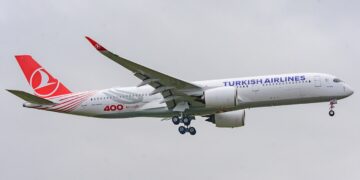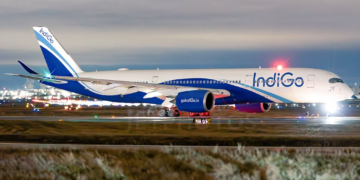On February 1st, India’s Finance Minister Nirmala Sitharaman presented the 2022 Union Budget. The aviation industry, in particular, had pinned its hopes on the government providing substantial comfort in light of the losses caused by the pandemic.
Air India’s deals remained a huge element in this year’s allocation, but overall, the aviation industry was left requesting more.

India’s aviation sector was hoping for government support for
- Spinning from the developments of the turbulent pandemic years, India’s aviation sector was hoping for government help for recovery. In the days leading up to the budget, there were expectations among industry experts that the state would support the struggling sector get back on its feet through financial support.
Airlines had hoped to receive several monetary benefits and concessions for a quick revival. Chief among them was a reduction in excise tax on aviation turbine fuel (ATF), which accounts for a significant chunk of an airline’s operating prices.
Industry players were also expecting concessions on interests and service tax (GST) on various undertakings such as investment and re-imports of aircraft and aircraft parts, and some reduction in the good rates for the operating capital provided to airlines and airports operators.
Civil Aviation Ministry
This year, the Civil Aviation Ministry was given ₹10,667 crores (approx. $1.42 billion). Out of this, the regional connectivity scheme UDAN acquired ₹600.7 crores (approx. $80 million), nearly the same as last year.
About ₹9,259 crores ($1.2 billion) has gone to AI Asset Holdings Limited, a special purpose vehicle (SPV), to handle the loans and debts for the financial restructuring of Air India, and ₹165 crores (approx. $22 million) were put aside to go towards the medical help for former AI employees.

Last year, the government had allocated ₹3,224 crore (approx. $431 million) for the aviation ministry, but its overall cost increased substantially due to Air India’s divestment. The UDAN scheme, which was given ₹600 crores ($80 million) last year, ended up commanding ₹ 994 crores (approx. $132 million). All of these pushed the complete revised aviation expenditure for 2021 to ₹72,652 crores (approx. $9.7 billion).
Of the total revised estimate of capital expenditure for this fiscal, ₹51,971 crore (approx. $6.9 billion) alone have been put aside to settle outstanding guaranteed liabilities of Air India and other “sundry responsibilities.”
Aviation sector disappointed
Reactions from the aviation industry tell that the budget failed to fulfill their anticipations. IndiGo’s CEO Ronojoy Dutta was quoted as expressing,
“…we were expecting tax concession to Aviation industry in the forms of cut in ATF excise duty and allocation of concessional finance to airlines to help us come out of the pandemic.”
Also, read
- Boeing won a launch order from Qatar Airways for the new freighter 777X
- Aviation Turbine Fuel Price by 8.5% , airfare may increase soon
- Qantas opens pilot training with simulator facility at Brisbane Airport
Consultancy firm Centre for Asia Pacific Aviation (CAPA) also said disappointed, saying, “India’s Union #Budget2022 had nothing for aviation or tourism. This was positively disappointing & insensitive given the near-broken state of these sectors, although somewhat anticipated. The industry will be pinning its hopes – as in the past – on post-Budget redressal.”
Indian government declared a cost hike on ATF by
To create something trickier, the Indian government declared a cost hike on ATF by up to 8.5%, just ahead of the budget. ATF cost has gone up to ₹86,038.16 (approx. $1,150) per kiloliter (kl) in the national capital region, the highest ever. Cost hikes like these are usually given down to passengers, reflecting on their ticket costs.

In light of all this, the aviation industry will be expecting the pandemic to end soon and traffic to bounce around to offset the rising operating prices.
Thank you
Stay updated with Aviationa2z.com



































